L.R. Lam's Blog, page 43
November 22, 2012
How I Outlined and Drafted the Sequel to Pantomime
Firstly: this isn’t writing advice. I am still very much figuring out how I do this writing malarkey best. But I wanted to write a blog post outlining my process of writing the sequel to Pantomime. Evidently, across a writer’s career, a second book is often the most difficult for an author to write. With a first book, there’s no deadline and thus less stress. A second book has a deadline, and expectations, and if it’s a trilogy, middle books can be tricky.
I had no real system in place when I wrote the first draft of Pantomime. I kind of made an outline, but in little dribs and drabs. I wrote very slowly, sometimes setting down the MS for months at a time and working on a book with an adult Micah Grey, or writing a short story or a poem, or not writing at all. It meant it took me a good 15 months to write, and then a furious 3 months of really substantial edits when I had my revision request from Strange Chemistry.
I don’t have that sort of time now, so I had to figure out a way to write faster. I found writing Pantomime2 (title still to be determined), both easier and harder than I thought. I started working on the sequel in late March, pretty much right after I found out book 1 was going to be published. I had been thinking about the sequel for a long time and had a few pages of vague notes and ideas. I spent three weeks working on fine-tuning the outline—I wrote lots more disjointed notes, about 10k in total. Any half-baked idea found its way onto the page. This is one of the best parts of writing for me: VOMIT ALL THE IDEAS!
I then vaguely arranged these ideas by subplots in a mindmap (yes, I made a mindmap). And then I made a chapter by chapter outline of the first 8 chapters, and pared down my remaining notes so it made more sense and was in chronological order. I wrote 3 chapters to get a sense of the book, and then finished my outline and sent it to my agent with a pleaded “does this make sense?” I got the thumbs up and kept going.
I tried to make this book a story where if you grabbed it and didn’t realise it was book 2, you’d still be able to follow it, even if you would wonder just how the characters started off in such a state. The main plot is self-contained, yet many hints and questions that are raised in the first book are explored and answered, and some subplots are still open at the end to lead into hopefully a third book.
I hate it when people profess that you should never edit your first drafts, that your first draft should always be a vomit draft written as quickly as possible. That works brilliantly for some people. It does not work that way for me. Yes, yes, I know Stephen King writes a draft in 3 months. He also has a hell of a lot of practice and no day job. I’m not a fan of writing advice that makes you feel guilty. The best writing advice is, as ever, get your butt in the chair and hands on the keyboard and type away, however suits you best.
The first draft of Panto2 took me 5 months and turned out to be 103,000 words. But I only worked on it maybe 4.5 of those months. The other 6 weeks I edited Pantomime twice and also wrote notes, researched, and wrote about 15k of another book. I can work on two projects at once, sort of, which again doesn’t work for some people. I prefer that, so if I get stuck on one project, I’m not banging my head against the keyboard and hoping words that make sense come out of it. I work on something else for a little while and then come back to the first project refreshed.
Every 20,000 words I stopped and edited. I read what I had, rewrote awkward scenes, moved scenes or chapters around, added new scenes, and I went back and altered my outline to reflect the changes I made. So by the end, the last 20k were rough, but the other 80k was in reasonable shape. That works for me. I can’t write straight through for the Micah Grey books—the world is complicated, and I worry I’ll go off on crazy tangents, or forget important details at the beginning that I could use to tie into the ending. I can get character’s voices better and figure out their motivations. I like having a draft at the end I don’t have to totally rewrite.
I have spent the last few weeks editing it more, while also bouncing around between other projects. I read through it a few times, and my alpha readers—my best friend, Erica, and my husband, Craig—pointed out some things they noticed. By this point it was mostly smoothing out inconsistencies in the first ¾ and making bigger changes to the last ¼. That draft, now 106,000 words, is now away with my wonderful agent. I guess I’ll find out soon enough if this style of drafting worked for me!
Funnily enough, I’m writing my next book in a way that is the complete antithesis of this. It’s a messy, messy vomit draft that I’m going to have to throw out and rewrite almost entirely, but it’s the best way to figure out what I want from that story. Just goes to show that every book is different.


November 21, 2012
Guest Post: Memory Scarlett on Re-reading Beloved Series
Today I’m thrilled to welcome Memory Scarlett of the excellent bookish Stella Matutina to the blog, on a subject that’s been on my mind quite a lot lately: finding the time to re-read your favourite book series. Memory shares some of her favourite series, some of which I’ve read and some I should obviously add to my endless TBR mountain.
I firmly believe that rereading a beloved series is one of life’s great joys. I read, and reread, primarily for character, so nothing makes me happier than the opportunity to spend thousands of pages with my favourite fictional people.
Trouble is, rereading series takes time away from other books, especially if one prefers to binge. Between my on-hand TBR and all the exciting new books I hear about every day, it’s been a while since I’ve returned to some of my favourite series.
Here, then are my Top 5 Fantasy Series I Want To Reread As Soon As I Can Insert Them Into My Reading Schedule:
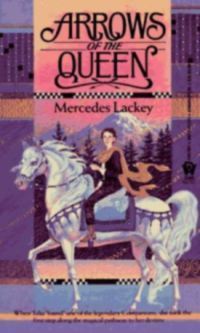
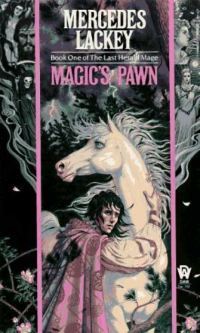
5. Mercedes Lackey’s Valdemar series
It’s been almost seven years since I revisited these traditional fantasies, which played a huge role in my young adulthood. ARROWS OF THE QUEEN, ARROW’S FLIGHT and ARROW’S FALL were among the first adult-marketed fantasies I read, and the very first novels of any genre in which I encountered queer characters. They’ve remained in my heart all these years for their emotional intensity, relatable characters, and wide-reaching story.
Alas, the series now contains thirty books and counting, so I doubt I’ll manage to squeeze a reread in any time soon. My last one took more than a month, even though most of the books only took me a day or so to finish. (They’re hella addictive.) I’m tempted to read just a trilogy or two to tide me over, but I have a feeling that would quickly escalate into a full-on Valdemar binge, leaving everything on la TBR sadly unread.
Someday. Someday.
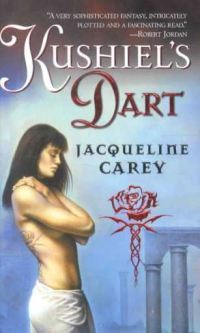
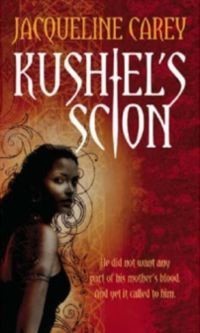
4. Jacqueline Carey’s two Kushiel trilogies
I’ll admit it: I don’t love KUSHIEL’S DART as much as everyone else does. That’s a minor blip, though, because I absolutely adore the rest of the series. These alternate histories are lush and evocative, packed with vivid characters, delicious worldbuilding, and drool-worthy prose. The tears I shed over Phèdre’s love life! The anguish I felt for Imriel as he struggled to be good! Add in some elegant religious fervor, a gorgeously realized alternate world, and a few spies, and you’ve made me a happy reader indeed.
I finished the series in mid-2009 and haven’t yet reread it, despite encouragement from some friends who recently discovered Carey and can’t stop raving about her. Something tells me I’ll like KUSHIEL’S DART a great deal more the second time through, now I know I can fully invest myself in certain subplots.
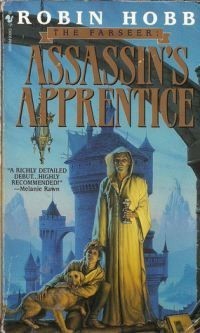
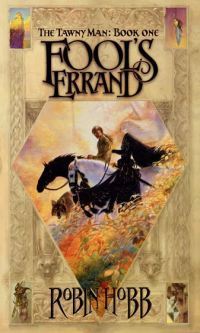
3. Robin Hobb’s Realm of the Elderlings series
Fitz and the Fool have my favourite friendship in all of fiction. (Hey, a fantastical tongue twister!) Hobb does many things really, really well in her series of intertwined epic fantasy trilogies, but it’s the connection between these two characters that ensures the books are never far from my thoughts. Hobb writes the sorts of relationships that live and breathe. It’s always possible to relate to her characters, even when they’re royally fucking up. Perhaps especially when they’re royally fucking up.
I’ve held off on rereading the three trilogies (and catching up on the new books that have been released over the last couple of years) because they’re hefty tomes, but I’m not sure I can hold out much longer. I must see Fitz and the Fool again.
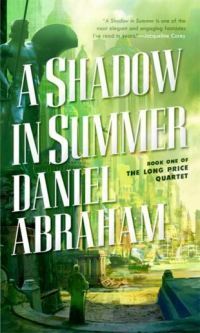
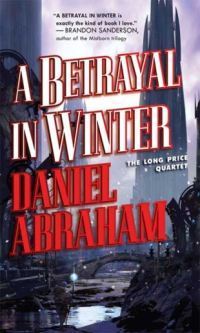
2. Daniel Abraham’s Long Price Quartet
It kills me–kills me–that so few people know about these Asian-inspired epic fantasies. Fully three quarters of the time, the folks I recommend them to haven’t even heard of Daniel Abraham, let alone this particular series.
This must change. It will change.
I love these books in large part because they get better and better with each installment. Abraham ups his game at every turn, forcing both his characters and the reader to question their assumptions as attitudes shift and small details pay off. One could argue that there are no heroes or villains here–just people, doing what they think they’ve gotta do to get by. It’s powerful stuff.
I have a feeling my love for the books will grow richer and more complex with each reread, as I catch on to more of the subtle foreshadowing and the philosophical awesomeness.
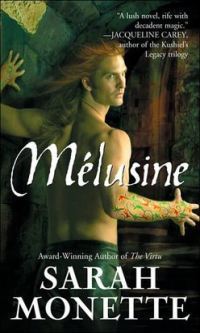
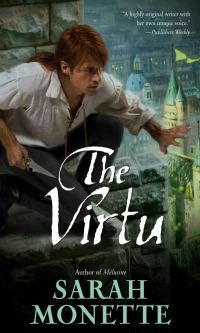
1. Sarah Monette’s Doctrine of Labyrinths
Okay, this one’s a cheat. These are my favourite books in all the world. I reread them every April, no matter how busy I am–except I skipped last year, because I was in one of those moods where I disliked pretty well everything, and I couldn’t have stood it if I’d failed to enjoy this dark fantasy quartet every bit as much as normal. I planned to leave it a month or two at most, but my mood persisted. Now I figure I’d best wait until next April.
But anyways–
I love these books so much, and reread them so often, because I adore the characters. I consider them among the best in fantasy. I always bawl my eyes out for them (which has been problematic in the past, as I often read in public places), and miss them horribly when I’ve closed the final book. Their story is also jam packed with many of my favourite things, including (but not limited to): familial issues; random half-siblings; heartache; woe; heart attack-inducing tension; delicious worldbuilding; a keen awareness and subversion of standard fantasy tropes; magic; redheaded people; How Stuff Works; thievery; and a mammoth.
I’m wicked eager to revisit them in 2013.
This list is, of course, far from exhaustive. I could probably exchange any of the following series for numbers 4 and 5, depending on my readerly mood:
Marie Brennan’s Onyx Court series. Historical fantasy centered on the faerie court beneath London.
Anne Bishop’s Black Jewels series. Dark, character-centric fantasy.
Elizabeth Bear’s Wampyre books. Alternate history with a vampire detective and a forensic sorceress.
R.A.Salvatore’s Drizzt Do’Urden novels. Fantasy adventure, and my guilty pleasure.
Anne Rice’s Vampire Chronicles. Historical and contemporary fantasy/horror which were my favourites before Monette.
Lloyd Alexander’s Chronicles of Prydain. Children’s fantasies which were my favourites before Rice.
Then there are the series I need to finish, like Brandon Sanderson’s Mistborn Trilogy and Ysabeau S. Wilce’s Flora books; the ones where I’m anxiously awaiting more volumes before I dive back in, like Scott Lynch’s Gentlemen Bastards Sequence and Patrick Rothfuss’s Kingkiller Chronicles; the ones I’m not entirely comfortable dubbing “series,” like Guy Gavriel Kay’s phenomenal Sarantine Mosaic; and the ones I’d include in a heartbeat if I hadn’t just reread them, like Ellen Kushner’s (and Delia Sherman’s) Riverside books and J.K. Rowling’s Harry Potter series.
I could spend a solid year rereading, and I doubt I’d get through everything I want to return to. Sigh.


November 18, 2012
New Blurbs & Reviews
Two amazing authors have endorsed Pantomime:
“With its cast of runaways, freaks and bullies, “Pantomime” blends Victorian circus glamour with grittier YA themes like identity, body image and independence. Entertaining and thought-provoking by turns, this is an assured debut by an exciting new fantasy author – Laura Lam is a name to watch!”
- Anne Lyle, author of The Alchemist of Souls
“Ancient myths, vintage tech and living wonders abound in the riotous carnival of fancy which is Pantomime. Lam paints her world with greasepaint and stardust while exploring the notion of the circus ‘freak’ with subtle brilliance. A spectacular and brave debut!”
- Kim Lakin-Smith, author of Cyber Circus
And some more of the reviews that have been trickling in the last few weeks:
Leo Elijah Cristea: “Pantomime is the kind of book I thought I’d never read because nobody would ever write it. It is a story about acceptance and belonging and about figuring out just who you are, who you can be, and just who you might be if you were only brave enough to take the first step . . . A complete and stellar success, effortlessly achieving all it set out to accomplish, Pantomime is the YA fantasy novel that will set the standard for all that follows in 2013, getting the year off to an excellent beginning. There is so much to say, so many observations and commentaries that should arise from reading Pantomime that it should be considered as most of the most important YA commentaries on identity and belonging written within the genre. It’s a bold statement, I suppose, but I hold to it: Pantomime is a work of art, a psychological adventure into exploring the self, and a damn fun read to boot.” (this review gets bonus points for making me cry!)
Elloise Hopkins for the The British Fantasy Society: “This is a well-crafted tale of secrets and dreams, written with a satisfyingly rhythmic prose that lends itself perfectly to the slow beauty and tragedy of the story, and is certainly the most in-depth character based fantasy to have been seen in a long while.”
Daphne @ Winged Reviews: “Pantomime at its heart is all about acceptance and making your own place in the world. My heart ached through the issues explored in this book, which Lam handled with finesse and respect. It really is a beautiful book to read and has set the bar very high for 2013 debuts indeed.”
Leanne @ Magic of Reading: “[Lam] hasn’t just written a book, she has a created a magical world, fascinating characters and broached subjects in this book that few have dared and she totally nailed it. Brilliant.”
Kaylie @ YA Bluewater: “It’s not often I get pulled into a world as completely as I did with the world of Ellada.”
Lucy @ The Library for Delinquents: ”If any book could make you want to run away and join the circus, this one would be it . . . In Micah, the author has created a protagonist like none other I have come across in YA fiction. It really is the perfect escapism.”
Pablo @ The Eloquent Page: “ Once again I find myself more than pleasantly surprised by a young adult title from a debut author. In all honestly, I think everyone should be reading this. I’m a firm believer the best fiction is that which is thought provoking without even appearing to try. Laura Lam has not only achieved this most difficult of tasks, she has managed to make it look effortless. Even now, days after finishing the book I’m still think about it.”
I might have missed some, but I think that’s most of the reviews. Feel free to link to any I missed in the comments!


November 17, 2012
Recommended Read: The Mad Scientist’s Daughter by Cassandra Rose Clarke
I don’t often write book reviews. I used to, but when I became an author I found it increasingly hard to be impartial. But I finished this book a few hours ago and I keep thinking about it. Some mild spoilers follow, but I’ve stayed away from really specific plot points. It’s a book that will stay with me. I think Cassandra and I must have similar taste, because this is so exactly my cup of tea.
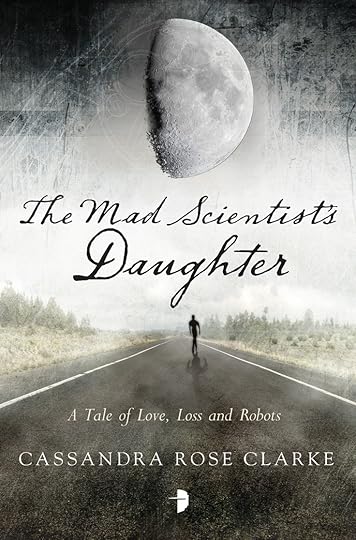 The Mad Scientist’s Daughter is hard to pin down. If I had to give it an elevator pitch, I’d say it’s about a girl who falls in love with an android that’s a bit like Data from Star Trek, but written in the literary tone of Margaret Atwood.
The Mad Scientist’s Daughter is hard to pin down. If I had to give it an elevator pitch, I’d say it’s about a girl who falls in love with an android that’s a bit like Data from Star Trek, but written in the literary tone of Margaret Atwood.
It’s a book that’s light on the science fiction and heavy on story and characters. Say all of the events in this book really happened—the unnamed Disasters that caused civilization to fall and rebuild itself. This is a book that would be written in that world as modern literature for the inhabitants of that world. Does that make sense? It’s written as if we live in that world already. So if you’re looking for a book with heavy science fiction elements, they are not here.
Robots are common—as nurses, as workers. But androids with such a level of sentience like Finn are not. He’s one of a kind. When Cat is six, her father, a brilliant cyberneticist, brings him home. At first, he scares Cat and she thinks he’s a ghost. And then he becomes her tutor, and her friend. And eventually, more. It follows Cat’s life, and how Fin is a constant, even if he’s not there.
It’s a love story that shouldn’t work. Finn grew up with Cat (naturally, he doesn’t age), and he was her tutor. In some ways Dr Novak, the “mad scientist” is like a father to Finn, too. So in that respect it’s odd, and perhaps a little wrong. But I found those elements didn’t put me off as much as I thought they would. I felt for Finn and Cat.
The book focuses on Cat. Sometimes, Finn is missing for large portions of the book. Time passes. The story starts with Cat at six and ends when she’s in her thirties, so there are huge skips of time between certain chapters. Cat grew up as an only child, left to run wild along the flowers. She’s selfish, but not in a deliberate way. And that selfishness and inability to really connect with others follows her into adulthood. She floats through life. She’s a daughter of a rich scientist. She studies philosophy, which is especially antiquated in a world where everyone studies engineering, and works part-time as a cigarette seller, or a vice girl. Occasionally, she weaves tapestries. She doesn’t have a fierce drive and she’s always introspective and a little melancholy. Because she’s not whole.
There are friends, but none of them have a deep bond with her. She doesn’t have any close female friends. And with men, she’s like an android that is incapable of love. One calls her an ice queen. She dates them because she feels like she should, but she doesn’t love them. She loves Finn, who she thinks can never love her in return because he’s a machine.
The book touches on so much—what is humanity? What is consciousness? What is love? It examines selfishness and how painful it can be to others even if it’s unintentional. And yet it also shows the consequences of not being selfish enough to be true to yourself and your feelings, of being too afraid to reach out for what you desperately want more than anything else.
Full of beautiful, melancholy prose that paints a strange, new future where the summers are too hot and the winters are too cold, The Mad Scientist’s Daughter is a gorgeous book. Read it to find out what happens to Finn and Cat, who will get under your skin.


November 8, 2012
Guest Post: The Film of the Book – Bryony Pearce, author of Angel’s Fury
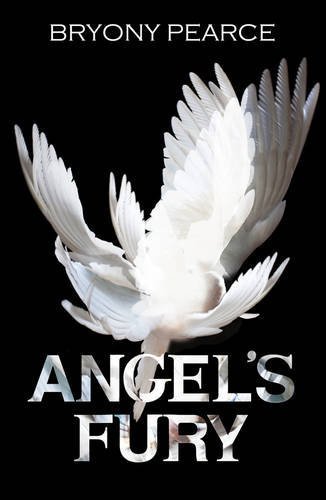 In addition to looking after the kids (I have two), and writing books as fast as I can, I also run creative writing workshops, do talks and run school visits and other events.
In addition to looking after the kids (I have two), and writing books as fast as I can, I also run creative writing workshops, do talks and run school visits and other events.
At my last few events, students have asked me whether or not I’d like my book to be made into a film. I’d like to think that perhaps they know something I don’t, but really the topic of films being made of books is probably top of mind due to the upcoming release of Breaking Dawn part 2, sigh.
Now, the obvious answer to that question is yes, of course I’d like my book to be made into a film, I’m not mad! If nothing else, I’d at least get some money out of it (which relates back to the other common question I get asked, are you rich? … I’m not).
Often students, or their teachers, will then follow up with the question ‘wouldn’t you be afraid that they would ruin the book? Wouldn’t you worry that the film-maker’s vision would then be the only one that readers would ever be able to see when they read your words?’
This is the answer I tend to give:
As a writer, I have a very clear picture of my characters, what they look like, sound like, even smell like. I know what they are wearing, how they walk, gesture, talk, tilt their heads and smile. The same goes for setting. I know what Cassie’s house and garden looks like, the layout and distinctive sounds and scents of the fictional German town Hopfingen. I know in intimate detail the Manor house where she goes for treatment, the farmhouse in which the group of patients choose to hideout. My job is then to try and convey that vision, alongside the story.
Once my words have left me, gone out into the world in the form of a published book, that’s it, I have no more chance to influence its reader regarding my vision. I’d love to be able to sit on every shoulder and point bits out – I hope you get my meaning here? Do you understand what Cassie is doing here? But I can’t. I have to trust my words.
However, I can’t see inside reader’s heads. I have no idea if Cassie, as she exists behind my eyes, is the same Cassie who has been imagined into existence behind each readers’. I know that there are the same number of Cassie’s as there are readers, but are they anything alike? In short, have I been successful? I have no clue.
If Angel’s Fury were made into a film I’d have the privilege of seeing inside at least one reader’s head. In making a film, the Director would be gifting me with the unique opportunity to view how he sees my book. What ‘his’ Cassie looks like, acts like, sounds like. The appearance of ‘his’ Manor house. If the actress cast to play Cassie looked anything at all like ‘my’ Cassie it would show me one important thing – I’m a good writer. I would finally get to find out whether or not I actually did my job properly.
Also, I don’t believe a film can possibly ‘ruin’ a book. The film-maker won’t be gathering up all copies and rewriting them according to his personal vision. Even if a film took great liberties with ‘my’ characters and storyline, the original book would remain.
It is true however, that no-one picking up Harry Potter for the first time, having seen the films, will be able to see the scarred little wizard as anyone other than Daniel Radcliffe.
In the same way, a film-maker’s vision would likely replace my own for any readers picking up the book after seeing a film made of it.
To this small concern I can say only one thing. The big pots of money will make you go away.
For more information about Bryony (especially if you would like to make her book into a film!), please visit her website www.bryonypearce.co.uk.
You can also follow her on Twitter @BryonyPearce. Her life isn’t hugely interesting, but she tries to make it sound more so where she can.


November 5, 2012
Guest Post: Dulcimers & Draughtsmen: Misconceptions of 18th Century Technology
Today I’m pleased to welcome to the blog a member of my online writing group, Rob Haines. He’s a veteran of last year’s Angry Robot Open Door month and wrote a book about warring chefs in an alternate Paris, which has some amazingly cool steampunk technology. Here, he discusses his research for writing his novel.
When I sat down to write a novel set in an alternate early-19th Century Paris, I thought I had a good idea of the level of technology available in Western Europe at the time: simple windup toys, tinny music-boxes, clocks with big swinging pendulums, that sort of thing. So I wrote a first draft based on my assumptions and a quick scan of the internet, exaggerating the level of clockwork technology available in line with the alternate history I was creating.
But once the draft was done and I buried myself in researching clockwork and automata in more depth, I rapidly discovered how wrong my assumptions had been. Even prior to the onset of the steam age, inventors and artisans the world over were no stranger to mechanisms so complex they can seem totally anachronistic to us, and suddenly the advanced technology I’d introduced in my draft seemed rather tame compared to reality.
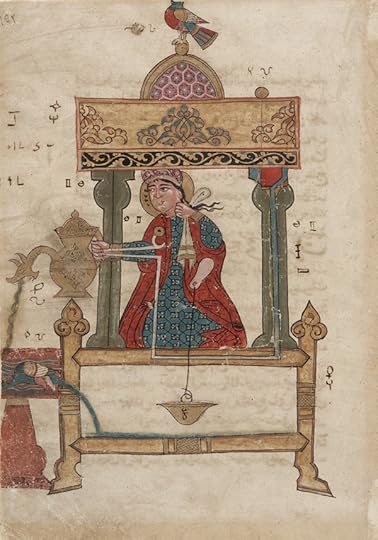 As far back as the 12th Century, the Islamic scholar al-Jazari was renowned for his Book of Knowledge of Ingenious Mechanical Devices, a handbook on the construction of machines from complex astronomical clocks to hand-washing automata, providing soap and towels to the user at pre-defined points in the process. So if simple robotics were already well-known mid-way through the Crusades, what technological advances would the next seven-hundred years bring?
As far back as the 12th Century, the Islamic scholar al-Jazari was renowned for his Book of Knowledge of Ingenious Mechanical Devices, a handbook on the construction of machines from complex astronomical clocks to hand-washing automata, providing soap and towels to the user at pre-defined points in the process. So if simple robotics were already well-known mid-way through the Crusades, what technological advances would the next seven-hundred years bring?
Flashing forward to the 1700s, French clockmakers were pushing forward the art of automata. Jacques de Vaucanson, a glove-maker’s son, built a life-size robotic flute-player which genuinely played the instrument, blowing air between articulated lips, modulated with a metal tongue, the airholes obstructed by its fingers – gloved in skin, after Vaucanson realised wooden fingers lacked the proper acoustics. It’s hardly surprising that when he created a set of automata to serve dinner for the visiting head of a religious order, the visitor declared Vaucanson’s creations to be profane, and ordered that his workshop be destroyed.
More impressive – and a little less creepy – is Henri Maillardet’s Draughtsman-Writer, the inspiration for the film Hugo:
When this marvellous device was rediscovered in 1928, its origins were unknown, but within its century-old memory – movements enscribed in the undulations of the cams beneath its feet – this writer held seven drawings and poetry, which it was designed to write on command. Once repaired, the automaton raised its pen and spelled out the name of its creator.
By this point it was clear I’d vastly underestimated the technology of the time, even if it was mostly employed in toys and amusements for the wealthiest members of society. I’d definitely be ramping up the complexity of automata and clockwork in my next draft. But even as I sat down to write, I encountered one last astounding automaton, far removed from my stereotypical ideas of toys and music-boxes; a beautiful German gift for the French Queen, Marie Antoinette:
Rob Haines is a writer, podcaster and ex-turtle biologist. His work can be found at www.generationminusone.com


November 1, 2012
Netgalley! A Podcast! Moar reviews! Modified NaNo! Exclamation Points!

Orders of business:
1. I am now up on Netgalley. Are you a blogger? Want a review copy? Go HERE!
2. I recorded a podcast with Stephen Aryan and Scott Grandison on The Book Club about one of my favourite science fiction books The Stars my Destination. It’s my first podcast, but here’s my voice, babbling nervously about one of the books that turned me from a reader who a reader who wanted to write one day. I tried to listen to it but I cringe at the sound of my own voice. It’s here!
2. Some new lovely reviews:
Hannah @ My Book Journey: “Pantomime is a dark, gritty world where all the fun of the fair can turn sinister at any time.”
Raimy @ Readaraptor: “If there’s ever a book that you need to rush out and pre-order this is it . . . Pantomime is quite possibly one of the best fantasies of its type I have read this year.”
Leanne @ District YA: “ I actually stayed up to the early hours of the morning because I just needed to know what was going to happen . . . Pantomime is a fascinating, exciting, thought provoking, colourful read.”
3. I’m doing a modified NaNo this year. I’m aiming to edit for an hour a day and then draft a new book for at least an hour. I’ll be keeping track of wordcounts but I’m not going to stress out about 50k in a month. I doubt I’d make it anyway. I did sign up on the NaNo site as staticsplit (site’s down so I can’t link it). I’ll also be attending some in-person write-ins.
That about sums it up. Whew.


October 30, 2012
Books Read in October
1. Songs of the Earth – Elspeth Cooper (fantasy, epic fantasy)
2. The Casual Vacancy – J.K. Rowling (contemporary, England, drugs, local politics)
3. The Holders – Julianna Scott (fantasy, ya, strange chemistry, Ireland)
4. Bossypants – Tina Fey (humour, memoir, audiobook, pop culture)
5. Unspoken – Sarah Rees Brennan (fantasy, ya, England, witchcraft)
6. Daughter of Smoke and Bone – Laini Taylor (fantasy, ya, angels, re-read)
7. The Stars my Destination – Alfred Bester (book club, science fiction, favourites, re-read)
8. Flowers for Algernon – Daniel Keyes (science fiction, favourites, re-read)
Totals:
76 books
24,879 pages


October 25, 2012
Lana Wachowski’s Speech
I’m sure most people have seen this now, but if you haven’t, you need to listen to this speech by Lana Wachowski, one of the directors of The Matrix and the forthcoming Cloud Atlas. It is moving, brave, heartwarming, and just wonderful.

Some choice quotes:
“All of us are conscious of the fact that not only will it be Andy and my first public appearance in a long time, but it will also be the first time that I speak publicly since my transition. Parenthetically this is a word that has very complicated subject for me because of its complicity in a binary gender narrative that I am not particularly comfortable with. Yet I realize the moment I go on camera, that act will be subject to projections that are both personal and political.”
“And this moment fulfilling the cathartic arc of rejection to acceptance without ever interrogating the pathology of a society that refuses to acknowledge the spectrum of gender in the exact same blind way they have refused to see a spectrum of race or sexuality.”
“We’re alternating perspectives quite conscious of the fact that we have just made a film about this subject — about the responsibilities us humans have to one another, that our lives are not entirely our own. There is dialogue from the film merging easily with the discussion and I find myself repeating a line from a character who I was very attached to who speaks about her own decision to come out. She says, “If I had remained invisible, the truth would have remained hidden and I couldn’t allow that.””
“Early on I am told to get in line after a morning bell, girls in one line, boys in another. I walk past the girls feeling this strange, powerful gravity of association. Yet some part of me knows I have to keep walking. As soon as I look towards the other line, though, I feel a feeling of differentiation that confuses me. I don’t belong there, either.”
“Years later I find the courage to admit that I am transgender and this doesn’t mean that I am unlovable.”
“Invisibility is indivisible from visibility; for the transgender this is not simply a philosophical conundrum — it can be the difference between life and death.”
“I am here because Mr. Henderson taught me that there are some things we do for ourselves, but there are some things we do for others. I am here because when I was young, I wanted very badly to be a writer, I wanted to be a filmmaker, but I couldn’t find anyone like me in the world and it felt like my dreams were foreclosed simply because my gender was less typical than others.
If I can be that person for someone else [pause, applause] then the sacrifice of my private civic life may have value. I know I am also here because of the strength and courage and love that I am blessed to receive from my wife, my family and my friends. And in this way I hope to offer their love in the form of my materiality to a project like this one started by the HRC, so that this world that we imagine in this room might be used to gain access to other rooms, to other worlds previously unimaginable.”


October 24, 2012
Recommended Read: Seraphina by Rachel Hartman
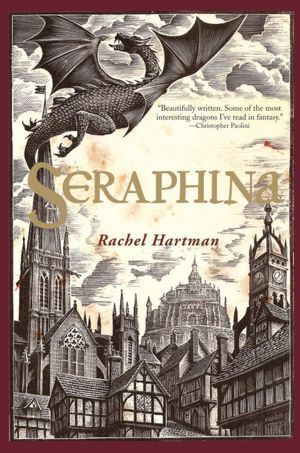 I’ve become tired of dragons in fiction. Most of the time, they’re pretty similar. They’re loyal companions, a la Anne McCaffrey’s Pern dragons. They’re lofty ones who see humans are being to use and tolerate, a la Tintaglia from Robin Hobb’s books. Or they’re savage beasts that can lay waste to the land and must be vanquished. Seraphina’s initial premise therefore appealed to me—dragons that could take human form out of a vague fascination with petty human lives. Dragons in Hartman’s world are like the Vulcans of science fiction—emotion is dangerous, and the dangerous of all emotions is love. Goredd was once at war with the dragons, but they now have an unsteady treaty and a tentative peace that could easily turn into an all-out war.
I’ve become tired of dragons in fiction. Most of the time, they’re pretty similar. They’re loyal companions, a la Anne McCaffrey’s Pern dragons. They’re lofty ones who see humans are being to use and tolerate, a la Tintaglia from Robin Hobb’s books. Or they’re savage beasts that can lay waste to the land and must be vanquished. Seraphina’s initial premise therefore appealed to me—dragons that could take human form out of a vague fascination with petty human lives. Dragons in Hartman’s world are like the Vulcans of science fiction—emotion is dangerous, and the dangerous of all emotions is love. Goredd was once at war with the dragons, but they now have an unsteady treaty and a tentative peace that could easily turn into an all-out war.
Seraphina is a half-human, half-dragon offspring of one such forbidden relationship. She looks human aside from the band of scales about her waist and on her forearms, which she keeps covered at all times. She’s a court musician, incredibly talented and passionate about music. She has a strained relationship with her father, a wealthy man who feels guilty at the death of his wife, and has a mentor in her draconic uncle Orma.
A member of the royal family is murdered, possibly by a dragon. Seraphina becomes caught up in the politics of Goredd, working with the bastard Prince Lucien and dancing a political dance with royalty and searching for a rouge dragon—who happens to be related to her by blood. At the same time, she learns that the strange people in her head that she’s protected herself from might actually be real and have something in common with her. And at all times, she must try to keep her secret safe, for fear that she will be shunned by humans and dragons alike.
Seraphina is one of my favourite fantasy books in recent years. Its prose is lush, its worldbuilding superb. Seraphina is a sympathetic character, and every character is richly fleshed out. While the book started a little slow for me as the world is introduced and layered, by halfway through I was smitten enough that I stayed up until 3.30 in the morning to finish, even though I had work the next day. This is a book I’ll re-read several times, and will buy the sequel the day it comes out. Very much recommended to people who like rich, secondary world fantasy with dragons that are different from the norm.






